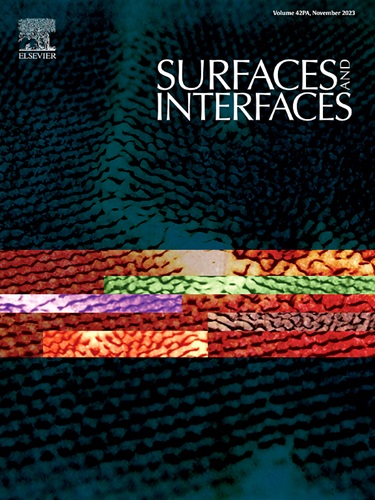A comparative study of the corrosion behaviour of flexible dry electrodes based on Ti-Cu thin films
IF 5.7
2区 材料科学
Q2 CHEMISTRY, PHYSICAL
引用次数: 0
Abstract
This work investigates the surface behaviour of Ti-based dry electrodes subjected to artificial sweat corrosion, aiming to assess their suitability for long-term neuromuscular rehabilitation in e-health applications. Three types of dry electrodes were prepared by PVD magnetron sputtering, depositing titanium (Ti), titanium dopped with copper (TiCu0.34) and Copper (Cu) thin films on flexible polylactic acid (PLA) polymeric substrates. The electrodes were submitted to corrosion resistance testing using electrochemical methods, including open circuit potential (OCP), potentiodynamic polarization, and electrochemical impedance spectroscopy (EIS). The results were analysed attending to the films’ chemical composition, crystalline structure, roughness, and morphology. Despite exposure to corrosive environments, Ti and TiCu0.34 electrodes exhibited minimal surface degradation, with no significant differences in corrosion rate (passivation current densities of approximately 8 and 11 × 10–6 A·cm-2, respectively). Importantly, the electrical resistivity of the Ti-based electrodes remained stable, with post-corrosion values (TiCu0.34: 10 µΩ·m, Ti: 9 µΩ·m) remaining within the pre-corrosion range (< 10.0 µΩ·m), indicating strong surface integrity. The findings underscore the strong corrosion resistance and consistent electrical performance of TiCu0.34 thin films, making them promising candidates for long-term use in wearable e-health devices.

求助全文
约1分钟内获得全文
求助全文
来源期刊

Surfaces and Interfaces
Chemistry-General Chemistry
CiteScore
8.50
自引率
6.50%
发文量
753
审稿时长
35 days
期刊介绍:
The aim of the journal is to provide a respectful outlet for ''sound science'' papers in all research areas on surfaces and interfaces. We define sound science papers as papers that describe new and well-executed research, but that do not necessarily provide brand new insights or are merely a description of research results.
Surfaces and Interfaces publishes research papers in all fields of surface science which may not always find the right home on first submission to our Elsevier sister journals (Applied Surface, Surface and Coatings Technology, Thin Solid Films)
 求助内容:
求助内容: 应助结果提醒方式:
应助结果提醒方式:


